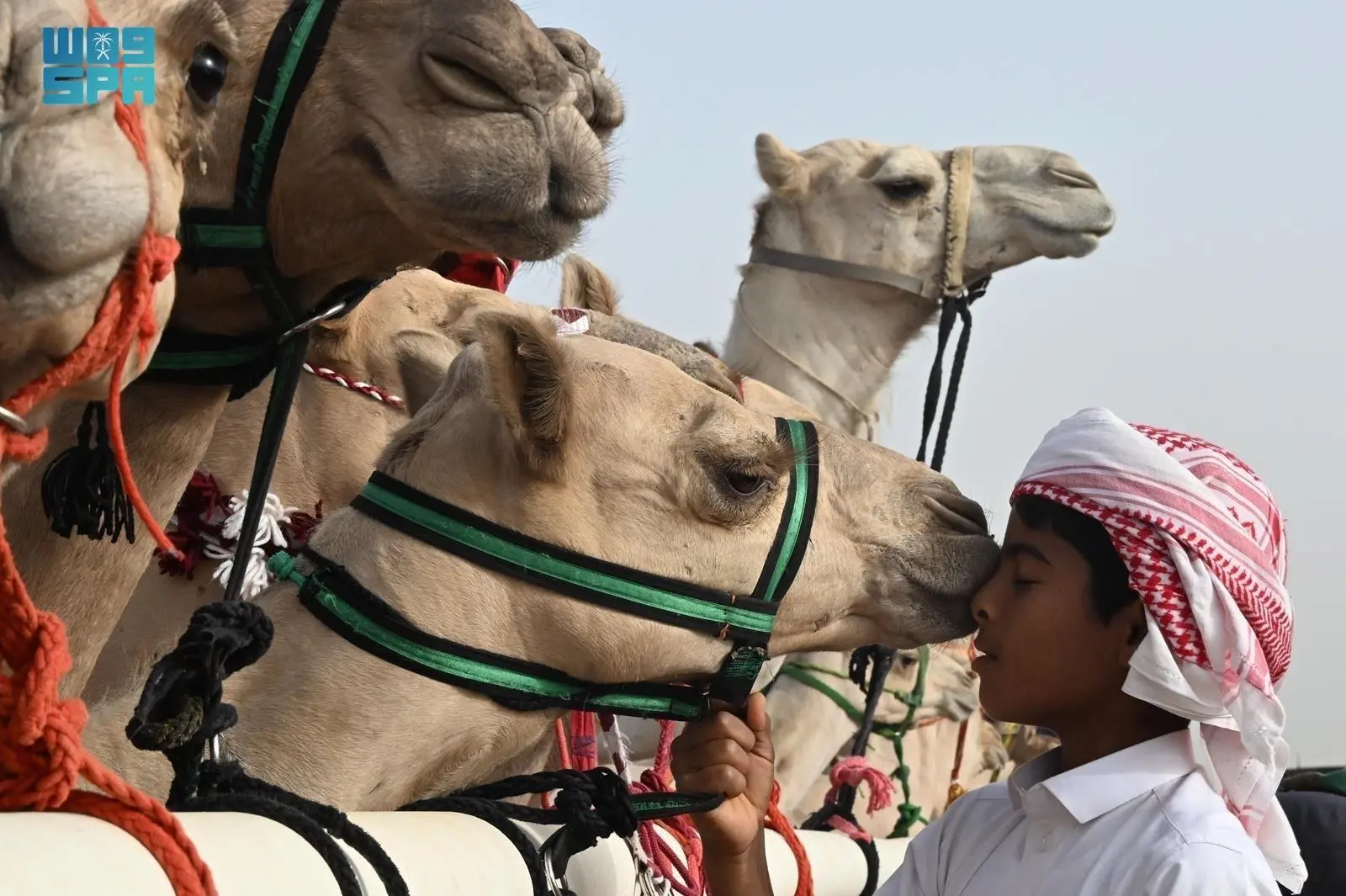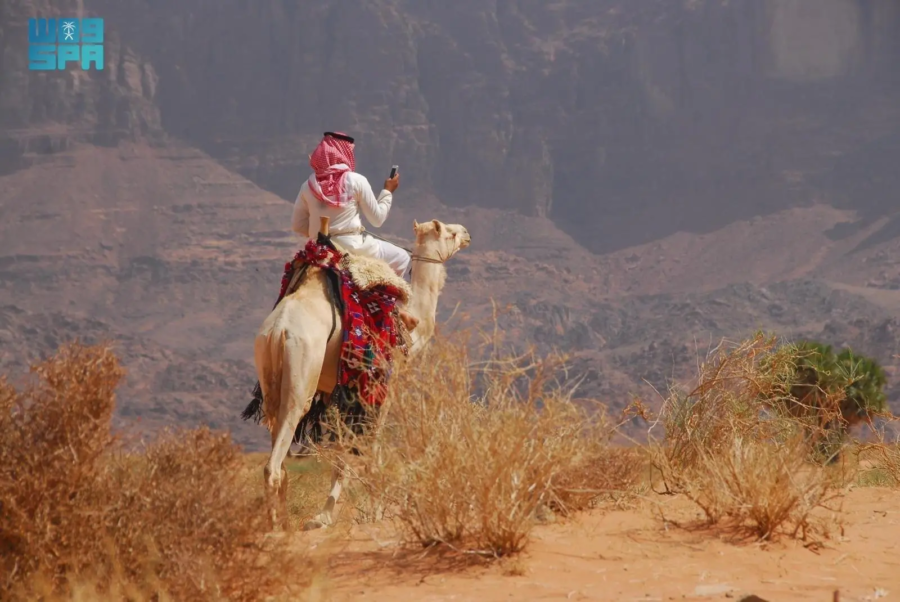Saudi Arabia named 2024 The Year of the Camel to promote international cultural exchange and highlight the traditional and ongoing relationship between Saudi society and camels.
Launched by the Ministry of Culture, a series of events during the year celebrating the camel as a cornerstone of Saudi cultural identity closes this week with the King Abdulaziz Camel Festival held in Al-Sayahid, northeast of Riyadh, which features the camel as well as arts and crafts from around the Kingdom.
Also unveiled by The King Salman Academy of Arabic Language is a comprehensive linguistic resource that includes terms and expressions related to camels, their breeds, colors, life stages, and diseases. In addition to the scientific section, the dictionary features a chapter on idioms, proverbs, stories, fairy tales, and poems dedicated to camels.
Other events during 2024 celebrating the camel’s heritage in Saudi heritage include the Camel Through the Ages exhibition in Dhahran and the Camel Alley Festival in Al-Taif. In November, the Council of Saudi Chambers of Commerce and Industry also announced the establishment of a National Camel Committee.
Earlier this year, Prince Badr bin Abdullah bin Farhan Al Saud, Saudi Minister of Culture, commented: “They are the ship of the desert on which our ancestors depended for their settlement and travel.” He continues that the “Year of the Camel comes in the context of national efforts to pay attention to camels and the industries associated with them, from a development and economic perspective. Our role in the Ministry of Culture is to add a cultural dimension to this high national interest, and to look at camels from a cultural perspective that reflects their high status in the world.”
Writing for Vogue Arabia in June this year, Caterina Minthe observed:
“Through poems, folklore, proverbs, and epic stories, the relationship between camels and man has been inspiring for centuries. A loyal and honorable companion, camels have served to cross long distances, becoming an essential element to Saudi life and identity. The domestication of the dromedary, or one-humped camel, around 3000 to 2000 BCE, revolutionized life for nomadic Bedouins living in the desert. Camels, able to endure long periods without water, could carry heavy loads, provide milk, meat, and hide. They also facilitated trade routes that connected the Arabian Peninsula with distant regions. The camels were integral to facilitating cultural exchanges and the prosperity of ancient civilizations.”
A Saudi Press Agency release notes:
“More than just a means of transportation, camels symbolize steadfastness, dignity, and unwavering loyalty, encapsulating Saudis’ ethos. In the Holy Quran, the camel is described as a marvel of creation. Islamic tradition highlights the significance of camels to the lives of prophets, notably the she-camel of Prophet Saleh, a divine miracle, and Al-Qaswa, the Prophet Muhammad’s companion.”
“King Abdulaziz bin Abdulrahman Al Faisal Al Saud, the founder of modern Saudi Arabia, acknowledged the significance of camels; his own journey of unification was inextricably linked to his she-camel, “Masiha”, which was not merely a means of transportation but also a symbol of his unwavering determination and resilience. A historical document from the King Abdulaziz Foundation emphasizes the King’s deep appreciation for camels, and his urging that they be taken care of and protected for being divine gifts deserving of utmost respect.”










